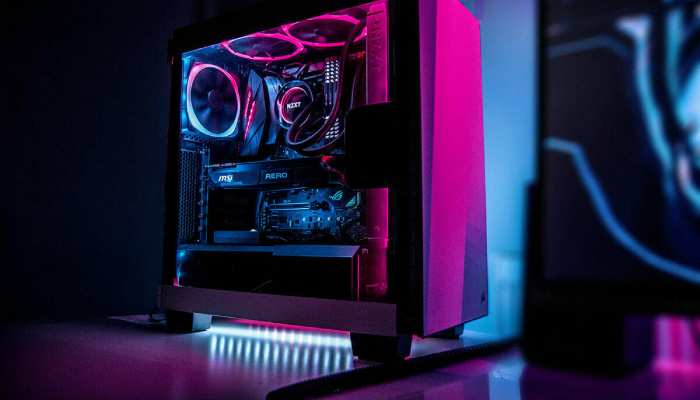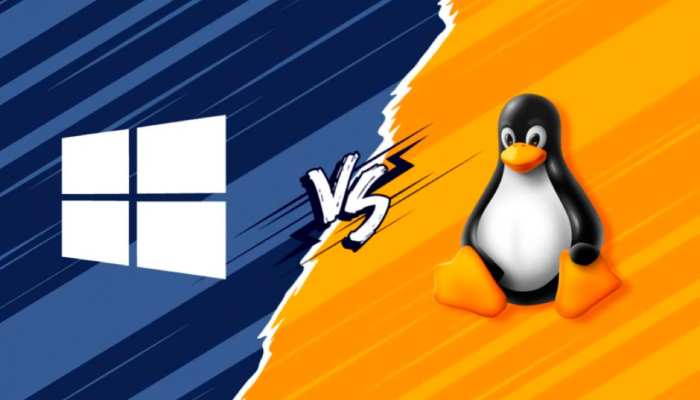Best Gaming CPUs in 2023
We present Gaming CPUs list. All figures in the text have been updated to reflect pricing at the time of writing. Figures in graphs indicate MSRP.
AMD Ryzen 9 7950X3D (16-core) and Intel Core i9-13900K (8 16-core)
The High-Performance Pick is a toss-up between two options: AMD Ryzen 9 7950X3D (16-core) and Intel Core i9-13900K (8 16-core). We recently reviewed the Ryzen 9 7950X3D, and it emerged as the fastest gaming processor. However, we haven’t selected it entirely for our recommendations below due to two reasons. Firstly, stock levels are low globally, making it hard for users to get their hands on this processor. Secondly, while it’s excellent for gaming purposes, there’s a more affordable alternative that gamers can consider.
If budget and stock allow it, AMD’s Ryzen 9 7950X3D is still the best option for gamers. But if not, Intel Core i9-13900K is a good alternative that performs equally well in compute-heavy tasks and comes at a lower price point of $570.
At the top end of desktop processors market lie four key options – two from AMD and two from Intel – all worth considering based on their respective merits. Our current pick is Intel Core i9-13900K; its counterpart being the higher bin version with faster clock speeds called Core i9-13900KS; everything else remains identical between both versions.
For team AMD enthusiasts out there looking for alternatives to Intel processors mentioned above can consider either Ryzen 9 7950X or Ryzen 9 7950X3D since they are very similar in specification except clock speeds and L3 cache where Ryzen has an edge with its higher L3 cache count of up to96 MB when gaming with Microsoft Game Mode enabled along with relevant drivers installed.
Based on POV-Ray benchmark results, Intel Core i9-13900K is the top performer. While Core i9-13900KS did suffer from thermal throttling, Ryzen 9 7950X3D was only around 19% behind, which is not too bad considering. In tasks such as V-Ray render, Ryzen 9 7950X3D was marginally ahead of Core i9-13900K by around 2%, and when rendering in Blender 3.3 in the long Barbershop test, it was ahead by around 23 seconds.
Undoubtedly, both CPUs possess the ability to carry out rendering and encoding tasks effortlessly. The Core i9-13900K outperforms the Ryzen 7950X3D in most of our CPU test suite, while the Ryzen 9 7950X gives a tough competition to the 13900K in compute-intensive scenarios.
As far as gaming performance is concerned, titles that can utilize additional L3 cache because of their implementation and execution of 3D V-Cache packaging favor AMD Ryzen 7950X3D. In other games that do not benefit from large levels of L3 cache, both CPUs perform similarly. It’s a very specific use case that AMD is taking advantage of. However, if you play games that don’t utilize L3 cache much, there won’t be much real-world benefit over the competition.
Intel Core i5-13600K
Apart from the benefits mentioned above of using 3D V-Cache technology, both CPUs are so competitive that it ultimately depends on your use case and workload type and what programs/applications you run. Neither Intel nor AMD’s flagship offerings lag behind in compute-heavy tasks or gaming. If power consumption is a concern for you, then AMD’s highly efficient Zen 4 cores draw much less power than Intel’s Core series; even with its sixteen cores active at full-load, Ryzen 9 7950X3D consumes less power than Intel’s fourteen-core part Core i5-13600K.
Overall when it comes to gaming primarily at higher resolutions such as 1440p and above upgrading graphics card provides more benefits than focusing solely on upgrading your processor. Although current GPU pricing still causes an uproar among users (understandably), NVIDIA’s GeForce RTX4090 performs exceptionally well while catering to high resolution and high refresh rate monitors such as those running at144Hz and beyond even though it comes with a hefty price tag attached to it. Similarly priced AMD Radeon RX 7900 XTX/XT is also an excellent option for high-resolution gaming. It’s unlikely that anyone will experience frame rates lower than 144 Hz with any of the mentioned options at sub-4K resolutions.
Another question to consider is, what are you upgrading from? If you’re upgrading from Ryzen 5000 or Intel’s 12th Gen Core, then upgrading your graphics card will likely yield a much bigger jump in performance. Of course, any of the latest and greatest CPUs will do the job. Even a CPU such as Core i5-13600K ($320) provides ample computing power for practically every title outside of those insane CPU-heavy games like Microsoft Flight Simulator 2020.
AMD Ryzen 7 5800X3D
Upgrading to a more potent graphics card will increase frame rates more than any processor would, even in this situation. However, we have chosen the AMD Ryzen 9 7950X3D ($699) as the best gaming CPU of the current generation due to its 128 MB of 3D V-Cache that does an excellent job in titles that can benefit from it. The Ryzen 7 5800X3D did not perform well compared to it when it was first launched on the compute front. The Intel Core i9-13900K ($570) is the next best option based on its current price of $570, which is cheaper and faster in most cases than not. Still, AMD has a clear advantage in power consumption and performance per watt.
The Core i5-13600K (6 8-Core/20T) is our Smart Money Pick for those who want a system that performs well without breaking the bank. It represents Intel’s bridging between entry-level Core i3 series and higher-end Core i9 and i7 series at $320. Even though it’s still pretty expensive compared to CPU pricing ten years ago, it offers incredible value for money for gamers looking to save some cash while still delivering adequate performance in computation workloads.
The Core i5-13600K has everything under the hood needed to make it a viable option for users looking to game at resolutions of 1080p up to 4K with a good discrete graphics card due to its total of fourteen cores (6P 8E), twelve threads, and twenty-four MB L3 cache. It can boost up to 5.4 GHz on Performance (P) cores while Efficiency (E) cores can hit frequencies up to 4.2 GHz.
In summary, both options are future-proofed with PCIe SSDs unlocking some benefits of this current generation; however, if you’re looking for a well-rounded option for both compute-related tasks and gaming, the Intel Core i5-13600K is an excellent buy at $320. Its versatility makes it highly desirable, and it benefits from all of the single-threaded IPC performance uplifts over Alder Lake like the Core i9-13900K does. While there might be a slight difference in gaming between both Intel processors, one is more than double the price of the other.
Let’s assume that the evidence presented thus far is insufficient to convince you of the excellent value for money offered by the Core i5-13600K. If that is indeed the case, then perhaps you should consider pairing this processor with a reasonably priced B660 motherboard and a set of DDR4 memory, all for less than the cost of a Core i9-13900K ($570). The result would be quite impressive.
Moving on to our final pick, which emphasizes gaming while still maintaining a good balance between performance per watt and pricing. There are numerous options available from AMD’s Ryzen 7000 and 5000 series that could potentially fit this criteria, including the Ryzen 7 5700X 6C/12T at $188, which offers superb value for under $200. With other Ryzen 5000 series SKUs from AMD experiencing price drops due to its Ryzen 7000 series launch, perhaps the Ryzen 7 5800X3D at $319 is currently the best value gaming processor on offer.
The unique performance benefits offered by the eight-core AMD Ryzen 7 5800X3D in select games cannot be fully matched even by flagship processors such as i9-13900K or Ryzen 9 7950X. While it’s true that latest-gen Ryzens have all of AMDs cache stacking technology benefits from its V-Cache packaging technology (such as in Ryzen 9 7950X3D), their very high prices put them out of budget for many people. Coupled with an inexpensive AM4 board and DDR4 memory though, it warrants consideration for those who are solely focused on gaming performance.
Normally we would recommend one of AMD’s Ryzen APU CPUs but given how much cheaper it has become recently compared to its MSRP ($449), it’s hard not to recommend one of their most potent CPUs for PC gaming: The eight-core (16-thread) Ryzen 7 5800X3D. In fact, it has jumped from #9 to #4 on Amazon’s top 10 best selling CPUs, which shows consumers are taking advantage of these price drops. With the V-Cache stacking technology with TSMC that comes with AMD’s cache stacking technology and a whopping 96 MB of L3 cache, it offers more performance than some flagships without breaking the bank.
As we can see in one of our CPU tests that benefits from the aforementioned L3 cache, the Ryzen 7 5800X3D not only outperforms both Intel’s 13th Gen flagships in Borderlands 3 at maximum settings at 1080p but also outperforms the Ryzen 9 7950X ($570) and is not far behind its more expensive counterpart, Ryzen 9 7950X3D ($699). While there are limitations when comparing this chip in compute tasks such as rendering and encoding, it still performs well enough to warrant consideration.
Even in games that favor faster cores over other factors, such as graphics cards or processors themselves, the Ryzen 7 5800X3D remains competitive. Thus allowing for savings on processors compared to AMD/Intel flagships which can be spent on better graphics cards instead – pushing framerates even higher.
The AM4 platform-compatible Ryzen 7 5800X3D combined with good DDR4 memory provides optimal performance for gaming enthusiasts.
When paired with a relatively inexpensive B550 motherboard, this provides extra funds to purchase a separate graphics card. Although the price of these cards has decreased, they are still not particularly affordable. Additionally, having eight Zen 3 cores is advantageous as it ensures that multi-platform games will not be lacking in CPU power compared to consoles which use eight-core Zen 2 CPUs.
It’s worth noting that this processor is significantly better than our 2021 budget picks. A year ago, a six-core 5600X cost $299 and even the more budget-friendly 5600G APU was $240. The fact that you can now get an eight-core processor with added benefits like the 3D V-Cache for only $20 more shows how much processors have improved due to AMD and Intel’s competitive pricing strategies.
However, it’s important to remember that our recommendation requires a separate GPU. While component prices have fallen compared to last year, we still do not recommend gaming on an integrated GPU if you can avoid it – especially considering how much discrete GPU performance has improved.
For those on a tight budget looking for gaming options, PCs still struggle to compete with game consoles like the Playstation 5 and Xbox Series X which are now easier to find after two years since their release at base prices of $500. The Xbox Series S is also available for around $259 or less when on sale.
Looking ahead, AMD announced its Ryzen 7000X3D series processors earlier this year at CES in Las Vegas with three different SKUs designed for various price points in the market. Unlike their Ryzen 5000 series which had one SKU featuring their new V-Cache packaging technology – the Ryzen7-5800X3D – AMD decided to introduce three different SKUs featuring V-Cache technology for their Ryzen7000 series instead.
AMD Ryzen 7 7800X3D with 3D V-Cache
While we already have flagship models such as Ryzen9-7950X3D ($699) and Ryzen9-7900X3D ($549) on the market, many are eagerly anticipating the release of the Ryzen7-7800X3D which is set to hit stores on April 6th. Although we don’t put much stock in in-house testing, several sources have simulated how this new processor might perform based on its one CCD with 8C/16T and 96 MB of L3 cache. We know that AMD’s latest Zen4 core offers an increase in IPC and overall performance compared to Zen3 while maintaining high efficiency.
This, in conjunction with its 3D V-Cache packaging technology in collaboration with TSMC that



